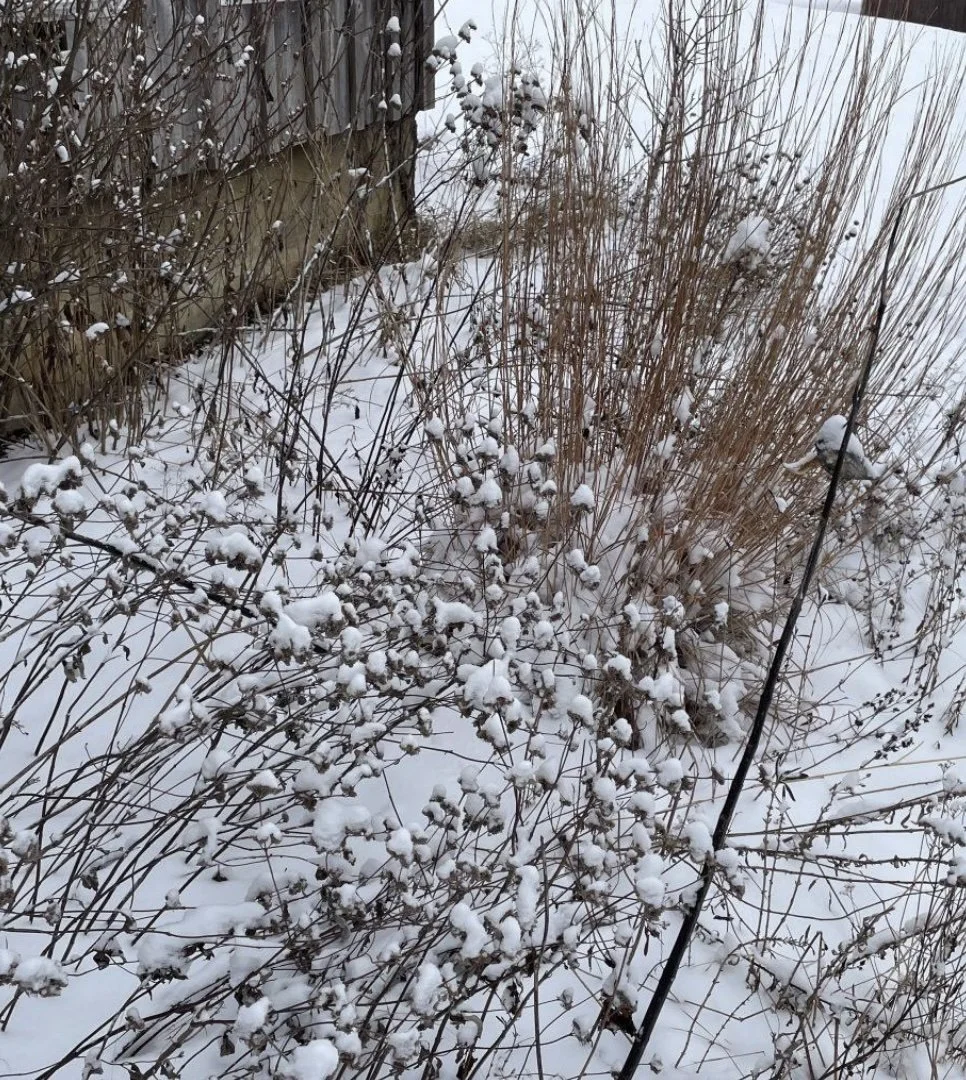Photo: American Goldfinch, Barb D’Arpino/Audubon Photography Awards
Elizabeth Martin
Now that fall migration is winding down, the resident birds who stayed behind will be foraging and scrounging for food to survive the winter. Now is the time to clean and fill the feeders to help birds make a living when other food sources are scarce. It’s also time to think about providing next year’s winter bird food by planting more native plants, including native grasses, wildflowers, and woody plants, such as shrubs, vines and trees, that provide sustenance all winter long.
American Goldfinch feeding on seeds of New England Aster (Symphyotrichum novae angliae). Photo: Barb D’Arpino/Audubon Photography Awards
Mourning doves survive almost entirely on grain, including seeds from native grasses such as little bluestem and Indian grass. Native grasses provide high quality, carbohydrate-rich grain for birds in winter. Sparrows and dark-eyed juncos also eat grass seeds.
Many of the best winter food sources for birds are produced by members of the sunflower family (Asteraceae). Asters, sunflowers, black and brown-eyed Susans, goldenrods, ironweeds and others all produce highly nutritious seed that ripens late in the season. Some plants produce large seed, and others produce small seed, and so different bird species are attracted to feed on them. For example, Northern Cardinals love large sunflower seeds, while finches and sparrows feed on the smaller seeds of brown-eyed Susans and goldenrods. By planting a variety of wildflowers, you’ll attract a greater variety of bird species looking for winter food. Goldfinches, chickadees, and titmice also feed on wildflower seeds.
A variety of dormant native grasses and herbaceous flowering plant stems left standing in winter. Avoid cutting them down until spring, if you can. They provide many ecological benefits, including food for many birds. Photo: Brandon Everett
To preserve this source of bird food, don’t deadhead or cut down dried grasses and wildflowers when they go dormant in fall. Not only will the seeds feed the birds, but the dried stems and stalks provide shelter and overwintering sites for insects, butterflies, and other little critters.
Finally, the fruits of many native trees, shrubs and vines provide winter food for birds, especially the fruit-lovers (frugivores) like woodpeckers, American Robins, Northern Mockingbirds, Cedar Waxwings and Blue Jays. For example, Coral honeysuckle (Lonicera sempervirens) is a semi-evergreen vine which produces clusters of red berries that support finches and robins. This plant’s dense growth also provides good nest sites and shelter for birds, and its red trumpet-shaped flowers attract hummingbirds in summer—it is truly a plant for all seasons. Berries on Virginia creeper (Parthenocissus quinquefolia) cling to the vine into winter and are favored by woodpeckers. Winterberry (Ilex verticillate), a deciduous holly shrub, and the evergreen American holly tree (Ilex opaca) produce starchy drupes that are not initially palatable and are only eaten later in winter, after they have gone through several freeze and thaw cycles. When the holly drupes are finally ripe, birds may show up in large flocks and completely strip a holly tree or shrub in a matter of minutes. By the time they’re eaten, the drupes have fermented, so you may see tipsy birds staggering unsteadily in your backyard after their feeding frenzy.
Drunken birds? You can’t get a show like that with a birdfeeder.
Northern Mockingbird feeding on Winterberry (Ilex verticillata). Photo: Barbara Driscoll/Audubon Photography Awards
Catch up on past Wildlife Sanctuary Almanac articles here.



